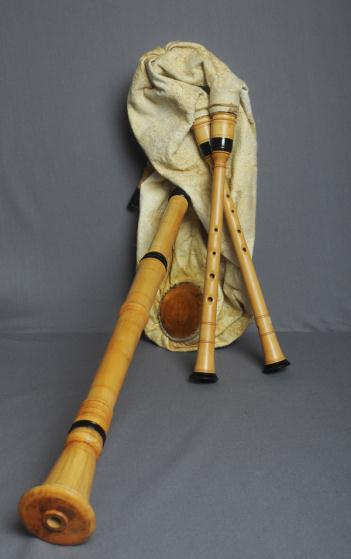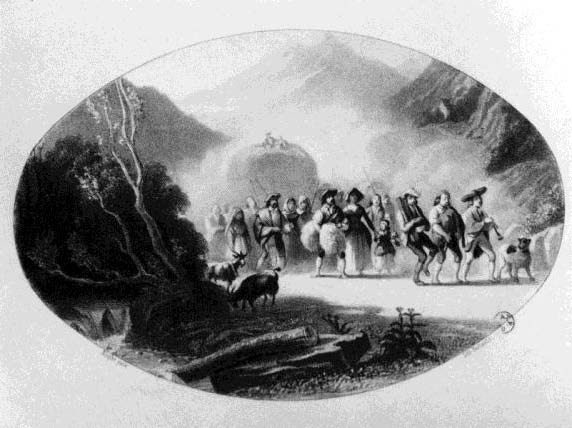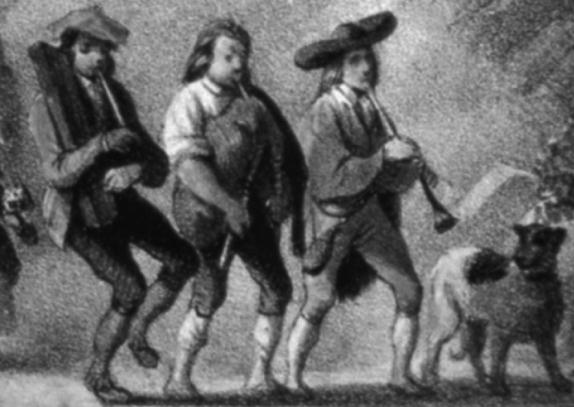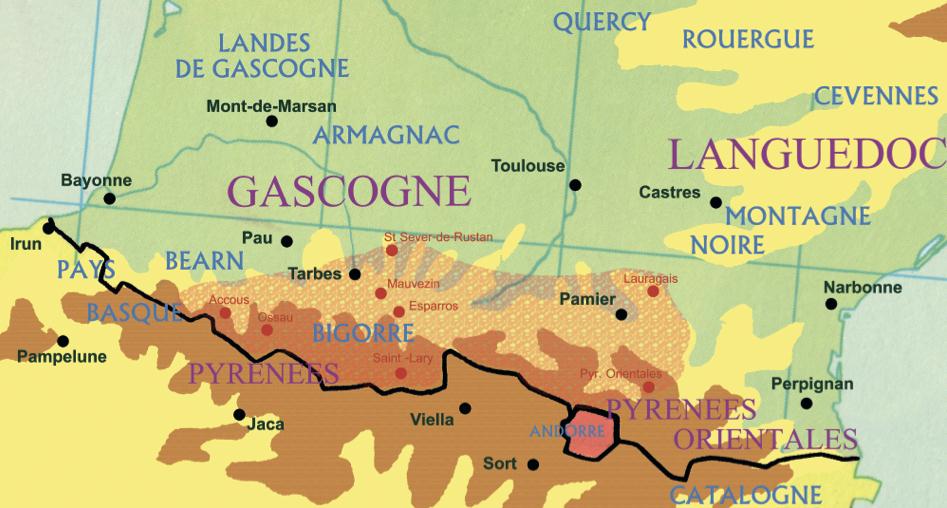(symphony in Gascon)
The last of the occitan bagpipes that I will describe is an enigma, as much for its origins as for its organology.

The “Samponha” is a polyphonic instrument but with two separate chanters both having conical bores.
This bagpipe was reconstructed from a series of iconographic representations found at Bearn and from the central Pyrenees. Several documents attest to the existence of a bagpipe in the Pyrenees but no concrete trace of such has been found.
The engraving below evokes a traditional rural scene where three musicians lead a procession, following a cart. The costumes appear to be those of the Ossau valley (near Pau). The scene is from Bearn.

The “Samponha” is a polyphonic instrument but with two separate chanters both having conical bores. This bagpipe was reconstructed from a series of iconographic representations found at Bearn and from the central Pyrenees. Several documents attest to the existence of a bagpipe in the Pyrenees but no concrete trace of such has been found. The engraving below evokes a traditional rural scene where three musicians lead a procession, following a cart. The costumes appear to be those of the Ossau valley (near Pau). The scene is from Bearn.
The bagpipe player carries his instrument in front in order to firmly hold the two melodic chanters. The bag is a large and no doubt comes from a whole goat. This image teaches us much concerning its existence, its form and how it was held by the musician. Here we certainly have the image of a traditional trio who played in the Pyrenees from the 18th to 19th centuries : three-hole flutes/ stringed tambourine, samponha and oboe.

The playing holes on the chanters of the samponha are arranged to recreate a complete scale, not exceeding the octave. Two notes are identical on each chanter which permits more complex creations than are possible with the polyphonic bohassa. In point of fact I organized the polyphonic bohassa based on my work on the samponha ; the bohassa being rather a simplification of the organology of the samponha. The samphona is not strictly speaking an invention but rather a reconstruction. It is my friend Bernard Blanc that in 1993 reconstructed it based on the specifications furmished by Jacques Baudouin. I discovered this instrument in an article that mr. Baudouin had written in the Pastel revue from the occitan conservatory of Toulouse of 1994 (n° 19, 1st trimester 1994). I found this article intriguing and even if the instrument hadn’t existed, I considered that his approach and analysis were very interesting. From that day on I decided to follow up on the work of Bernard Blanc. With the accord of Jacques Baudouin I contacted Bernard Blanc and we agreed that I could continue the construction of the samponha to bring it back to life. I can only underline my gratitude to Bernard for having given me all the useful information to undertake this task. At the time the samponha was played in the A scale but now as well I make models in G which sound a bit deeper and allow one to accompany the gascon flute and the oboe of Couserans (a large oboe in three sections from Ariège). Finally my dream to hear the original trio playing has been realized. You can hear all of these instruments on my latest cd, recorded with Pierre Rouch, consecrated entirely to instruments of the Pyrenees.

